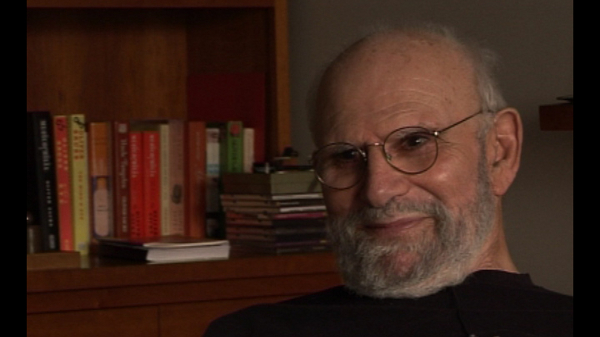NEXT STORY

My grandfather's history
RELATED STORIES

NEXT STORY

My grandfather's history
RELATED STORIES


|
Views | Duration | |
|---|---|---|---|
| 211. Filling in for Stephen Jay Gould in Natural History | 248 | 03:00 | |
| 212. How I got to know Stephen Jay Gould | 376 | 04:22 | |
| 213. My friendship with Stephen Jay Gould | 352 | 02:03 | |
| 214. My birthday presents from Stephen Jay Gould | 278 | 00:57 | |
| 215. Stephen Jay Gould arranges my 'elements' birthday party | 1 | 239 | 01:30 |
| 216. Stephen Jay Gould's brush with death | 283 | 01:34 | |
| 217. Stephen Jay Gould's ominous article | 407 | 01:12 | |
| 218. Stephen Jay Gould's unhappy diagnosis | 318 | 01:17 | |
| 219. Stephen Jay Gould's magnum opus | 412 | 00:45 | |
| 220. Stephen Jay Gould's last days | 435 | 01:38 |


The only... there was an... some emotional breakdown at Steven’s final lecture. He wept and many of the students wept. He came back to New York, and almost instantly plunged into coma and died. It was as if he had kept himself going by sheer willpower, and then having completed his teaching, having seen the book out, he was ready to let things go and... he was only 60.
One also has the dark feeling, one can’t help wondering and people who’ve had double cancers like this, whether treatment for the first cancer, especially heavy radiation might have led to the second cancer. This question arose with Susan Sontag who survived an evil cancer 20 years earlier, and then developed another cancer. And it also happened with my good friend, Ralph Seigel, who first developed a lymphoma in the throat, had heavy radiation to it and then developed a brain tumour.
Whether this is just doubly bad luck, or... or whether treatment itself, of this intensity can prove mortal later, I don’t know. It’s an uncomfortable thought.
Oliver Sacks (1933-2015) was born in England. Having obtained his medical degree at Oxford University, he moved to the USA. There he worked as a consultant neurologist at Beth Abraham Hospital where in 1966, he encountered a group of survivors of the global sleepy sickness of 1916-1927. Sacks treated these patients with the then-experimental drug L-Dopa producing astounding results which he described in his book Awakenings. Further cases of neurological disorders were described by Sacks with exceptional sympathy in another major book entitled The Man Who Mistook His Wife For A Hat which became an instant best seller on its publication in 1985. His other books drew on his rich experiences as a neurologist gleaned over almost five decades of professional practice. Sacks's work was recognized by prestigious institutions which awarded him numerous honours and prizes. These included the Lewis Thomas Prize given by Rockefeller University, which recognizes the scientist as poet. He was an honorary fellow of both the American Academy of Arts and Letters and the American Academy of Arts and Sciences, and held honorary degrees from many universities, including Oxford, the Karolinska Institute, Georgetown, Bard, Gallaudet, Tufts, and the Catholic University of Peru.
Title: Stephen Jay Gould's last days
Listeners: Kate Edgar
Kate Edgar, previously Managing Editor at the Summit Books division of Simon and Schuster, began working with Oliver Sacks in 1983. She has served as editor and researcher on all of his books, and has been closely involved with various films and adaptations based on his work. As friend, assistant, and collaborator, she has accompanied Dr Sacks on many adventures around the world, clinical and otherwise.
Tags: Stephen Jay Gould
Duration: 1 minute, 38 seconds
Date story recorded: September 2011
Date story went live: 02 October 2012